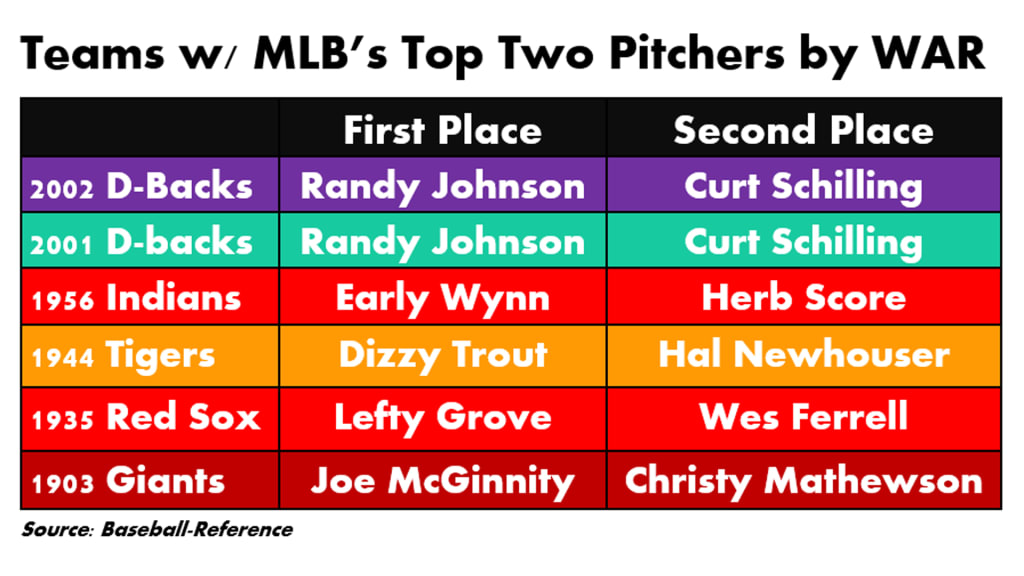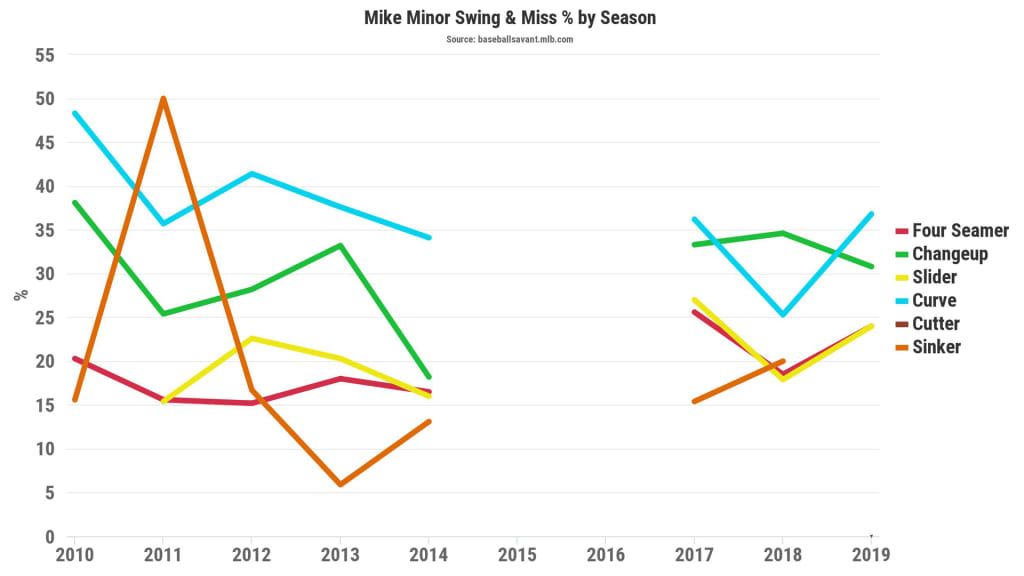A year ago at this time, Mike Minor was carrying a 4.61 ERA into a start in Oakland. Lance Lynn was riding out a free-agent horror story, still playing catch-up after sitting at home until March and then packing his bags for the Bronx at the Trade Deadline.
So, in true “you-can’t-predict-baseball” fashion, Minor and Lynn are obviously MLB’s top two pitchers by Baseball-Reference WAR. In other words, at least one metric says Texas boasts the two most valuable pitchers in baseball. Seriously! If it seems rare to you for one team to claim each of those top two spots, your hunch is correct. It’s only happened six times.

The Rangers’ poor infield defense and offense-friendly ballpark might have something to do with Minor and Lynn’s WAR totals, since Baseball-Reference’s version considers those factors more than FanGraphs’ FIP-based WAR model that looks at strikeouts, walks and homers. But Lynn ranks second in FanGraphs’ ranking, for what it’s worth, while Minor is tied for 16th. No matter how you slice it, the pair has been durable (Lynn is second in the American League with 165 innings pitched, Minor is fourth with 162), and they’ve pitched deep, each averaging well over six inning per start. Most importantly, they’ve been extremely good.
The single stat that best describes Minor and Lynn’s success? It might be their identical 32.3% hard-hit rates, per Statcast, that puts them in the 88th percentile among qualified starters over the past 365 days. Neither pitcher owns an arsenal that would make scouts drool, but they continue to keep hitters off balance through the tried and true methods of command, pitch mix and changing speeds.
Minor: Easing through the front door
There were plenty of questions about the Rangers’ plan to convert Minor back into a starter last year; this was an oft-injured lefty who’d been out of baseball for two years before coming back successfully as a Royals reliever in 2017. Those questions lingered through a tough start to '18, but Minor’s legitimately been one of the Majors’ best starters in the past calendar year, posting a 2.89 ERA in that span.
Minor owns the highest average four-seam fastball spin rate of any full-time starter, but unlike spin kings like Justin Verlander and Gerrit Cole, much less of Minor’s active spin actually contributes toward making his heater rise. It also averages 92.6 mph, a middle-of-the-road mark for starting pitchers. He’s largely laid off the gas since May of last year, opting instead -- like so many pitchers across the game -- to incorporate more of his secondary pitches.
Minor’s changeup might be his most fascinating tool, especially after he began embracing the idea this year of hurling it right toward the hands and knees of right-handed hitters. Throwing a changeup inside during a platoon disadvantage isn’t conventional, but it’s become Minor’s version of the Greg Maddux front-door two-seamer -- and he’s commanding the pitch well.
“He can throw it at a location that is tough for some righties to see,” Rangers pitching coach Julio Rangel told The Athletic’s Levi Weaver, who went in-depth on the pitch earlier this year. “When you throw front-door to a right-handed hitter, they usually don’t expect that, especially when you’ve been throwing sliders and breaking balls, cutters, fastballs in, fastballs away.
“It just makes it really tough on hitters when … it looks like it’s going to be a fastball off the plate [inside], and right at the last minute, it goes over the plate.”
Minor’s 21 strikeouts looking on the changeup are more than twice as many as any other pitcher, and only three starters have racked up more free strikes with the change-of-pace. Hitters haven’t squared up Minor’s changeup even when they do swing; per Statcast, it owns the second-most average horizontal movement of any starter’s changeup, and opponents are hitting just .195 with four homers across 191 plate appearances. Meanwhile, the swing-and-miss rates on all of Minor’s other pitches have risen this year, maybe because that changeup is making hitters so uncomfortable.

Lynn: Deceptive heat
Lynn already began turning things around last summer, cutting his league-worst walk rate in half after he adjusted his position on the rubber. That improved command has carried over into 2019, along with some of the highest velocity of his career, and that combination helps a 32-year-old who’s more fastball-reliant than any starter stay competitive in modern baseball.
But Lynn’s league-leading fastball usage carries some nuance, since he really throws three different heaters. His four-seamer often rides the top of the zone, while the two-seamer burrows in on righties’ hands and the cutter trots the same path before taking a hard left. Per Baseball Prospectus’ tunneling metrics (subscription required), Lynn has averaged the fifth-smallest perceived distance between pitch types at the “decision-making point” -- the moment when hitters must decide whether to swing -- among starting pitchers.
Lynn sliced his sinker usage in half this year, trading grounders for more strikeouts and popups to boost his 3.06 FIP -- the best mark of his career and a top-10 figure in baseball. He’s always gobbled up innings, but they've never looked as dominant as this year.
All the clubs with league-topping tandems referenced above finished with winning records, while the Rangers are four games below .500. But possessing two top-flight starters on affordable contracts is a silver lining for Texas. Minor will earn roughly $9.8 million in 2020, his final year under contract, while Lynn is owed $19 million through 2021. As the Rangers try to put together a contending roster for their new ballpark next year, the top of their rotation might be one area where they can feel secure.



